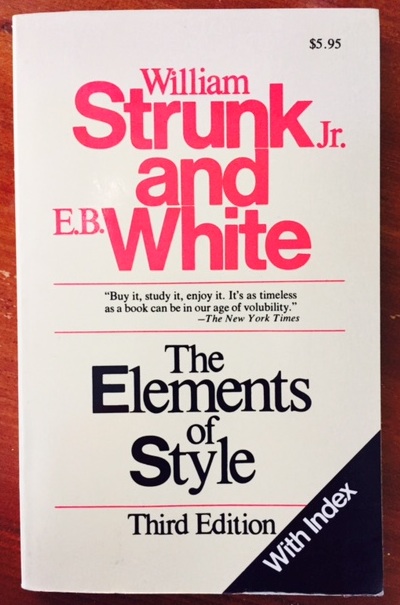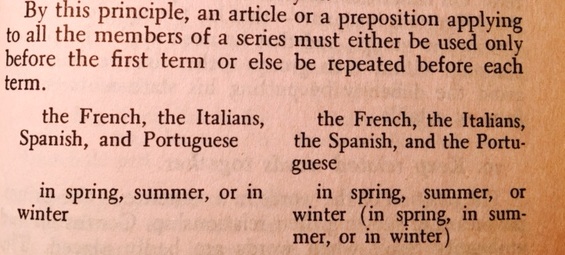Patent Claim Drafting – Use of “OR”
 It is surprising to read a Federal Circuit case on patent claim construction, delving deeply into the difference between “and†and “orâ€, referencing Stunk & White — and incorrectly writing “of†when the court meant to use “or†in a quote from Struck & White!
It is surprising to read a Federal Circuit case on patent claim construction, delving deeply into the difference between “and†and “orâ€, referencing Stunk & White — and incorrectly writing “of†when the court meant to use “or†in a quote from Struck & White!
The Federal Circuit wrote: “A common treatise on grammar teaches that ‘an article of a preposition applying to all the members of the series must either be used only before the first term or else be repeated before each term.’ William Strunk, Jr. & E.B. White, The Elements of Style, 27 (4th ed. 2000).†SuperGuide Corp. v. DirecTV Enterprises, Inc., 358 F.3d 870, ¶ 68 (Fed. Cir. 2004).
“An article of a preposition†— upon reading this I wondered: is this some rule of grammar that I never learned? A preposition states the relationship between objects, and does not require an article. So, I went to the source — Strunk & White. And here is what it actually says: “[a]n article or a preposition applying to all the members of a series must either be used only before the first term or else be repeated before each of them.†Strunk & White, The Elements of Style, page 27, emphasis added.
Of course, it’s a typo in the Federal Circuit case. BUT, this misquote of Strunk & White has been repeated in scholarly articles analyzing the use of “or†in patent claim construction. I’m not sure how “or†what these authors were thinking when they read about an “article of a preposition†but they certainly weren’t thinking about grammar!
PATENT CLAIM CONSTRUCTION
Now that this confusion had been cleared up, here is a brief summary on the Federal Circuit’s interpretation of “OR†in patent claim drafting:
– OR – INTERPRETATION #1 –
“Or†may mean: A or B, but not A and B.
If a claim uses “or†it may be interpreted to mean a choice between two items, but not both. Kustom Signals, Inc. v. Applied Concepts, 264 F.3d 1326 (Fed. Cir. 2001). The Kustom Signals court stated: “The district court construed the term ‘or’ … to mean ‘a choice between either one of two alternatives, but not both.’†Kustom Signals, 264 F.3d at 1330. The court held that “The prosecution history requires that ‘or’ means the operator’s choice between search for the strongest or fastest target speed, but not both. The district court’s claim construction is affirmed.†Kustom Signals, 264 F.3d at 1331-1332.
– OR – INTERPRETATION #2 –
Or (pun intended) “or†may mean: A, or B, or A and B. See, Brown v. 3M, 265 F.3d 1349 (Fed. Cir. 2001). In Brown, the court held that “or†meant A, or B, or C, or any combination of A, B and C.
Lesson learned: be clear in claim drafting, and be careful when using the word “orâ€.

